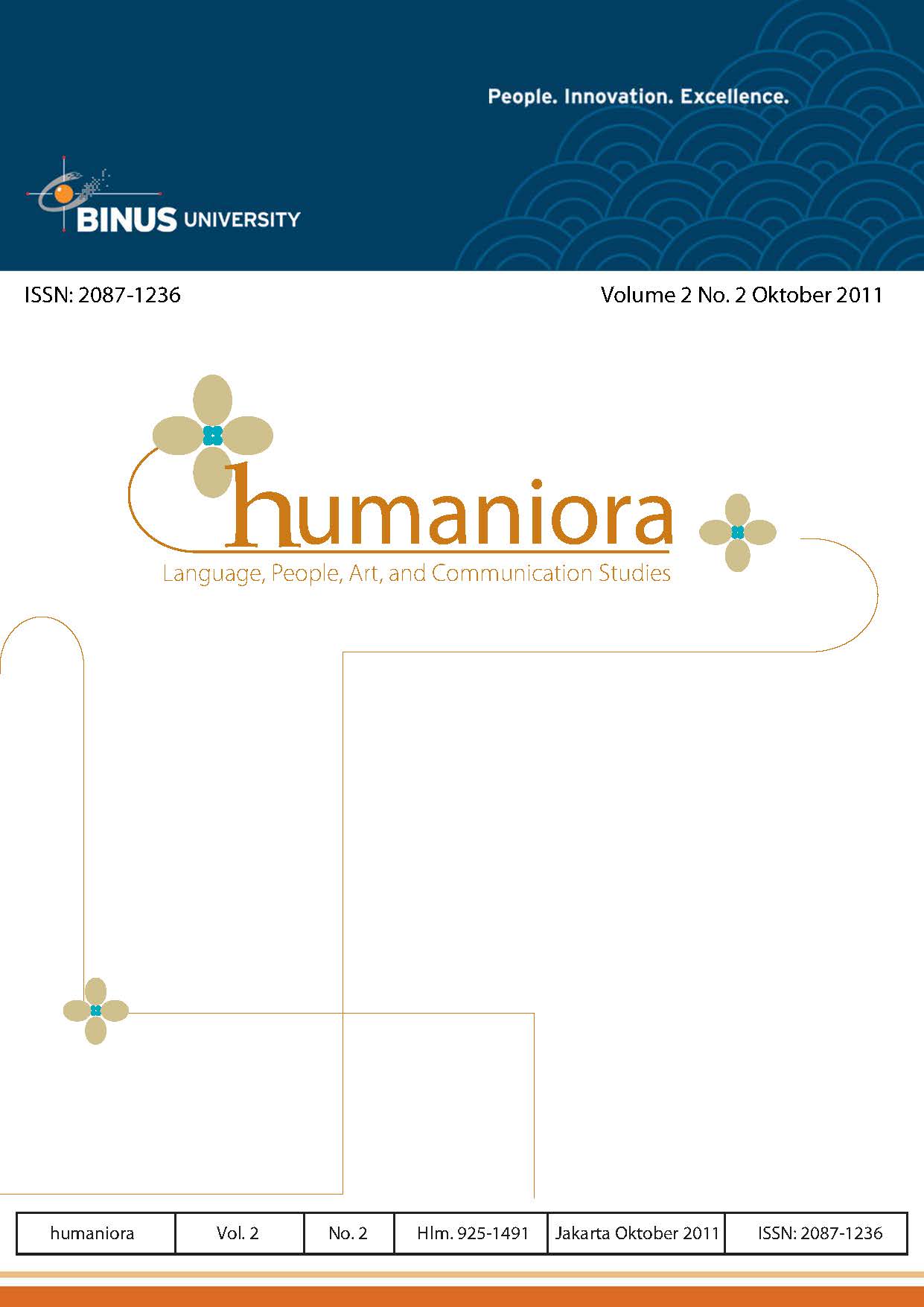User Experience (Ux) sebagai Bagian dari Pemikiran Desain dalam Pendidikan Tinggi Desain Komunikasi Visual
DOI:
https://doi.org/10.21512/humaniora.v2i2.3166Keywords:
user experience, designAbstract
Digital world, internet and mobile have made communication does not move in one way anymore. Visual Communication as a part of Communication recently is going to be more personal, segmented, interactive, user-generated content, accessible and available in huge quantities. In the positive side, users have more options to receive or to respond communication signals according to his/her needs and wants. In opposite, now everybody gets information clutter caused by unbalanced information between what we can received and what we can digested. For that reason we need method to study the people as an object of our communication. Learning user experience concept make us understand more about our object insight. The aim of this paper is to review principles that used in UX study. In the future we expect this discourse will be assesed and used in a design thinking method and developed in visual communication design institution. Research method used in this paper is based on literatural studies. Understanding of UX will help designers developing design that can be effectively communicate with their segement.
Â
Â
References
Google. (n.d.). Google user Experience. Diakses pada 30 Juli 2011, dari http://www.google.com/about/corporate/company/ux.html
International Organization for Standardization (ISO) Switzerland. SO FDIS 9241-210.[2009]. Ergonomics of human system interaction - Part 210: Human-centered design for interactive systems (formerly known as 13407)
King, D. L. (2008). Designing the digital experience: How to use experience design tools and techniques to build websites customers love. New Jersey: Cyber Age Books.
Lidwell, W., Holden, K., & Butler, J. (2003). Universal principles of design. Massachussets, US: Rockport Publisher.
Lindstorm, M. (2008). Buyology: Truth and lies about why we buy. New York: Crown Publishing.
Mullins, P. M., & Treu, S. (1991). Measurement of stress to gauge usersatisfaction with features of the computer interface. Behaviour& Information Technology ,10 (4), 325–343.
Schleifer, L. M., & Geoffrey, O. O. (1990). System response time and method of pay: Cardiovascular stress effects in computer-based tasks. Ergonomics, Vol 22(12), Dec 1990, 1495-1509.
Wastell, D. (1990). Mental effort and task performance: Towards a psycho physiology of human computer interaction. In Proceedings of the IFIP INTERACT ’90 third international conference on human–computer interaction, Cambridge, UK, 27–31 August, 107–112.
Wilson, C. (2010). User experience re-mastered. your guide to getting the right design. Michigan, US: Morgan Kaufmann.
Downloads
Published
How to Cite
Issue
Section
License
Authors who publish with this journal agree to the following terms:
a. Authors retain copyright and grant the journal right of first publication with the work simultaneously licensed under a Creative Commons Attribution License - Share Alike that allows others to share the work with an acknowledgment of the work's authorship and initial publication in this journal.
b. Authors are able to enter into separate, additional contractual arrangements for the non-exclusive distribution of the journal's published version of the work (e.g., post it to an institutional repository or publish it in a book), with an acknowledgment of its initial publication in this journal.
c. Authors are permitted and encouraged to post their work online (e.g., in institutional repositories or on their website) prior to and during the submission process, as it can lead to productive exchanges, as well as earlier and greater citation of published work.
USER RIGHTS
All articles published Open Access will be immediately and permanently free for everyone to read and download. We are continuously working with our author communities to select the best choice of license options, currently being defined for this journal as follows: Creative Commons Attribution-Share Alike (CC BY-SA)




















